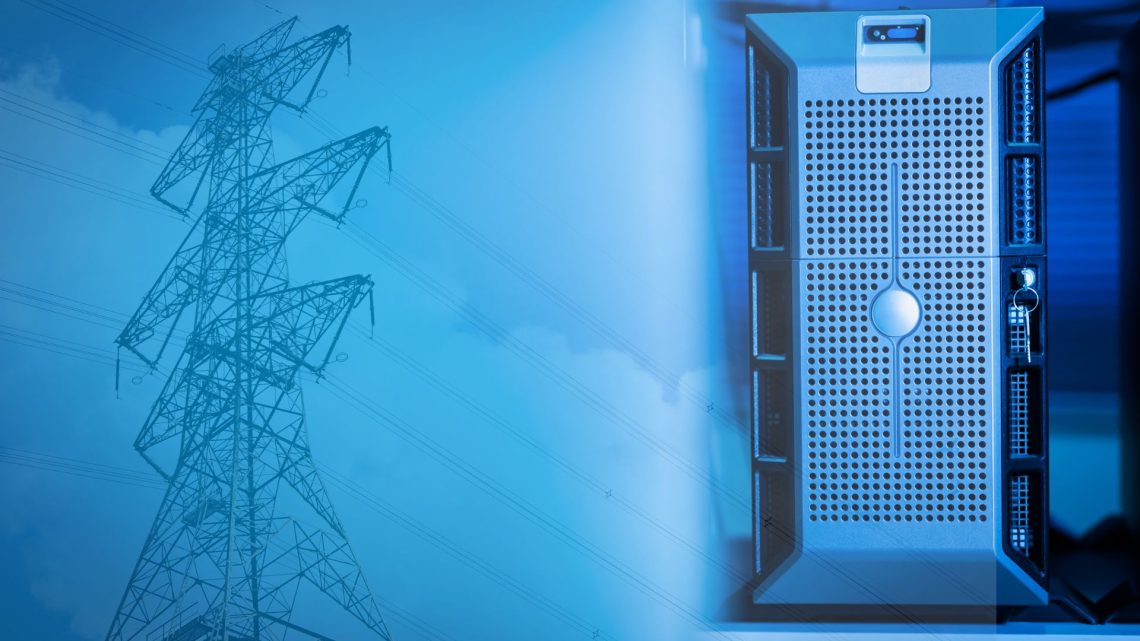
How AI Data Centers Are Quietly Wreaking Havoc on Your Power Grid
December 30, 2024The Unseen Electrical Problem Affecting Household Appliances
Imagine your refrigerator suddenly working harder than it should, using more electricity, and wearing out faster. Or envision your dishwasher struggling through its cycles due to subtle yet persistent electrical stress. This isn’t science fiction. The growing issue of harmonic distortion—commonly referred to as “bad harmonics”—is quietly impacting homes across the United States, costing consumers more in energy bills and appliance replacements.
Harmonic distortion arises when electrical currents deviate from their ideal sinusoidal waveform. This happens frequently with non-linear electronic devices like LEDs, computers, and appliances with variable-speed motors. These devices draw electricity in uneven bursts, creating additional harmonic frequencies that disrupt the smooth flow of power. When left uncontrolled, this distortion causes inefficiencies, overheats equipment, and shortens the lifespan of motors and appliances.
Impact of AI Data Centers on Power Quality and Household Efficiency Broken Down Here:
- AI data centers significantly amplify harmonic distortion in nearby power grids due to their high and non-linear energy consumption.
- Urban areas with dense data center locations, such as Chicago, show elevated Total Harmonic Distortion (THD) levels beyond the sustainable limit of 8%, as reported by Whisker Labs’ Ting Sensor Network.
- Specific neighborhoods near data centers experience THD levels as high as 20%, leading to reduced energy efficiency, increased appliance wear, and higher utility costs.
- High harmonic distortion causes household appliances like refrigerators and dishwashers to work less efficiently, shortening their lifespan due to overheating and excessive vibrations.
- Data centers’ influence on harmonic currents disrupts local power grids, especially when grids are stressed or operating close to capacity.
- Sensors indicate that 38% of homes in specific utility areas (e.g., Commonwealth Edison) experienced THD levels above the 8% threshold required by IEEE 519 standards, with seasonal trends showing persistently high distortion.
- Elevated THD levels result in economic losses for households, including wasted power and premature equipment failure, particularly in power-intensive and urban regions.
- The inefficiencies contribute to higher electricity bills, with households in affected areas incurring added costs due to harmonic-induced energy losses.
- Continuous power quality monitoring tools, such as the Ting network, reveal localized hotspots of distortion, helping utilities identify problem areas more accurately.
New players, such as Bloom Energy, are stepping onto the stage, offering high-tech solutions that not only stabilize these harmonics but significantly boost energy sustainability.
Understanding the Relationship Between Harmonics and Energy
To explain harmonics, picture a neatly played piano note—its frequency is smooth and pure. Now imagine discordant, out-of-sync keys clashing with the original note. The music becomes chaotic. Similarly, harmonic distortion introduces chaotic frequencies into power systems. This havoc not only wastes energy but also damages equipment over time, leading to poor efficiency and higher energy costs.
The Role of Data Centers in Exacerbating the Problem
Data centers consume enormous volumes of electricity to power servers and cooling systems. Their energy use often causes severe harmonic distortion in nearby power grids. A study from Whisker Labs’ Ting Sensor Network revealed that urban areas with high data center density, such as Chicago, experience total harmonic distortion (THD) levels above sustainable thresholds. These elevated levels directly impact households by reducing the efficiency of essential devices like refrigerators and washing machines.
Riku Kalliomaa of Merus Power explains, “Data centers are inherently non-linear loads. Their energy needs create significant harmonic currents, especially when connected to local grids under strain.”
The demand for power from AI technologies has amplified the complexity within these electricity systems. With rapid digitization, addressing harmonic distortion in power-intensive areas has become urgent.
Bloom Energy and its Revolutionary Solution to Power Quality
Enter Bloom Energy, an innovative leader in clean power solutions. The company’s cutting-edge technology, the Bloom Energy Server, is a solid oxide fuel cell (SOFC) that offers highly efficient, low-emission electricity generation. Operating at the microgrid level, Bloom Energy Servers take fuels, such as natural gas or hydrogen, and convert them into uninterrupted, high-quality electricity directly at the site of use.
These systems have several advantages for mitigating harmonic distortion and enhancing grid reliability. Unlike conventional energy systems dependent on centralized grids, Bloom’s distributed generation approach avoids the lengthy transmission lines where power losses and distortions commonly occur. The servers provide stable, harmonic-free energy that is particularly valuable for mitigating distortions caused by large-scale data centers.
By acting as resilient sources of high-quality energy, Bloom’s servers are effectively creating “islands” of stability within stressed power systems. This technology not only offsets harmonic disruption but also supports the rapid growth of AI and cloud computing by ensuring reliable, distortion-free electricity for data operations.
Why Green Investors are Turning to Bloom Energy
Bloom Energy’s impact on sustainability extends beyond power quality. Their system can run on clean hydrogen, biogas, or responsibly sourced natural gas, offering pathways to net-zero emissions. For green investors, this positions the company as a frontrunner in the clean energy transition.
Recently, Bloom Energy announced a $350 million green convertible senior notes offering, up from an initially planned $250 million due to strong demand from investors. This surge in interest highlights how Bloom’s technology aligns with sustainability-focused portfolios. These funds are earmarked for expanding their operations, further optimizing their solid oxide platforms, and pursuing global energy projects focused on decarbonization.
The practical applications of their technology give them a competitive edge. For instance, their electrolyzers produce clean hydrogen using 15% less electricity than competing systems, creating additional efficiencies in energy-intensive markets. Their solution also helps customers avoid disruptions caused by planned outages, a significant issue in grids overloaded by renewable variability and expanding digital infrastructure.
Tackling Harmonics and Power Efficiency Together
Bloom Energy’s innovations contribute to solving the persistent problem of harmonics alongside other technologies, such as active harmonic filters. By working within distributed grids and targeting high-demand nodes like data centers, their installations can effectively mitigate THD at its source.
Other utility-focused initiatives complement these efforts. Upgraded transformers resistant to harmonic-rich loads are gradually replacing older systems. Meanwhile, intelligent monitoring tools, like Whisker Labs’ Ting Network, allow both companies and households to identify where distortion is most severe. These innovations form a multi-pronged approach to improving overall power stability.
What This Means for Homeowners
For consumers, advanced technologies like the Bloom Energy Server offer a glimpse into what a more resilient and efficient energy system could deliver. By reducing the impacts of external harmonic distortions, such systems could protect appliances and cut household energy bills over the long term.
Simple home-level steps, such as installing surge protection with harmonic mitigation features or using IoT devices to monitor distortions, can also pave the way for individuals to manage these challenges.
The Path Ahead for Energy Systems
Harmonic distortion may seem like a niche technical issue, but its ripple effects have the potential to reshape how both utilities and households perceive energy management. Bloom Energy’s role in this transition is emblematic of a broader industry shift—where clean, resilient technologies converge with urgent energy demands to create systems fit for an electrified future.
With the increasing adoption of data-intensive technologies like AI, investments in sustainable energy solutions capable of handling non-linear loads will be critical. Bloom Energy, through its innovative SOFC-driven platforms, is poised to lead not only in reducing harmonics but also in establishing new standards for sustainable, reliable power generation.
For homeowners and businesses alike, this means a brighter, cleaner energy future—one where disruptions like bad harmonics are sidelined, and daily life runs more smoothly and efficiently.



 With over 15 years of reporting hydrogen news, we are your premier source for the latest updates and insights in hydrogen and renewable energy.
With over 15 years of reporting hydrogen news, we are your premier source for the latest updates and insights in hydrogen and renewable energy.